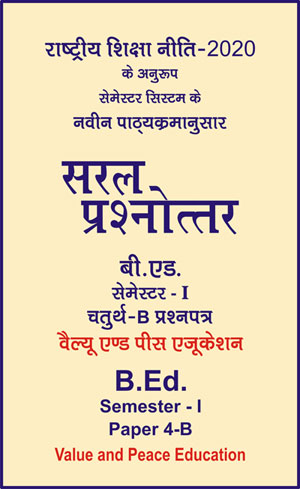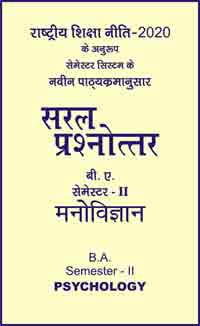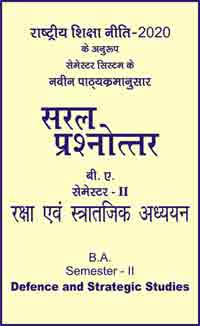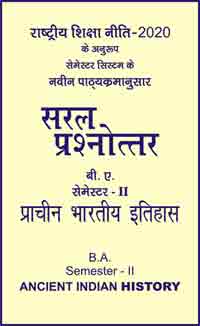|
बी एड - एम एड >> बी.एड. सेमेस्टर-1 प्रश्नपत्र-IV-B - वैल्यू एण्ड पीस एजुकेशन बी.एड. सेमेस्टर-1 प्रश्नपत्र-IV-B - वैल्यू एण्ड पीस एजुकेशनसरल प्रश्नोत्तर समूह
|
5 पाठक हैं |
||||||
बी.एड. सेमेस्टर-1 प्रश्नपत्र-IV-B - वैल्यू एण्ड पीस एजुकेशन (अंग्रेजी भाषा में)
Question- Write a short note on Joint Family acts as agency of socialization.
Answer -
The traditional family structure in India has been thought to be that of joint family since ancient days.
Joint family in India has been defined as a group of people belonging to three or more generations who live under the same roof, eat food cooked from the same hearth, and participate in common activities. These people, depending upon the nature of kinship system, have common rights in the property.
However, others feel that it is not always necessary to share residence and kitchen for members of a joint family. Sociologists feel that fulfilment of following three conditions is enough to call a family as joint. These conditions are : generation depth, rights and obligations, and property.
Two or more families having kinship relationships who may live separately, but share emotional bonds, joint property and function under one authority can also be termed as constituting a joint family.
Characteristics
In brief, the joint family in India is marked by the following characteristics :
-
It has an authoritarian structure : The power to take decisions regarding matters related to family and individuals lie in the hands of head of the family. His/her decision is taken as final and everyone has to abide by it.
-
It has familistic organisation : It implies that the interest of the family as a whole is more important than the individual’s interest. One has to sacrifice one’s personal wishes, likes and dislikes, these go against family norms or rules or traditions.
-
Status of members is determined by their age and relationship : The status of a person higher in are is higher in a joint family than a person lower in age.
Similarly, a person is respected more because of the higher status in terms of material or bloodties. A husband, an uncle, an aunt and the in-laws are respected because of higher status in a relationship. A person’s ability and achievement are not given importance in determining status.
-
Blood relationship gets preference over material relationship : It implies that the husband-wife relationship is subordinate to father-son or brother-brother relationship.
-
The family functions on the ideal of joint responsibility : Everyone shares the problems of other members of the family and tries to help in whatever manner one can.
-
All members get equal attention : The family income is pooled together and needs of the individual members are met according to their needs and not according their contribution. However, the description of the joint family along with its characteristics as given above constitutes as ideal picture. In reality, therefore, joint family functions in less than ideal-manner having lost many of its ideal characteristics, at least partly.
The joint family system is useful for agricultural and business-based families because both activities require manpower and pooling of economic resources such as land and money.
|
|||||













